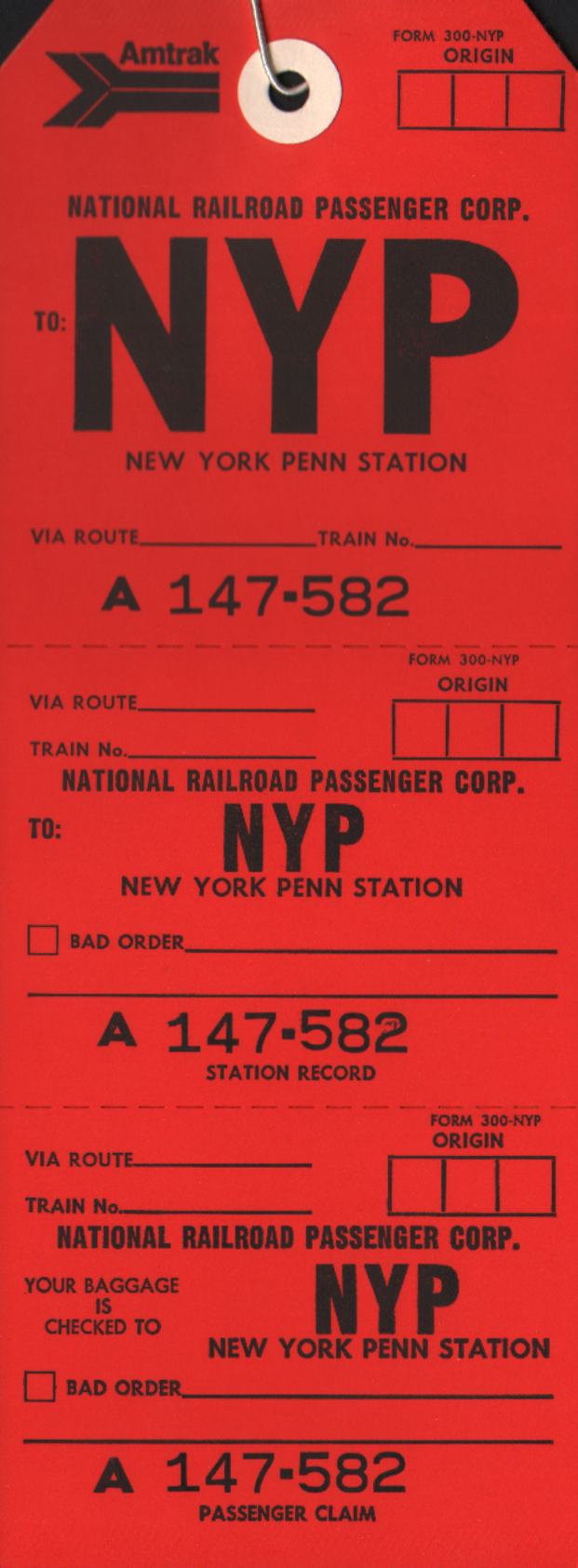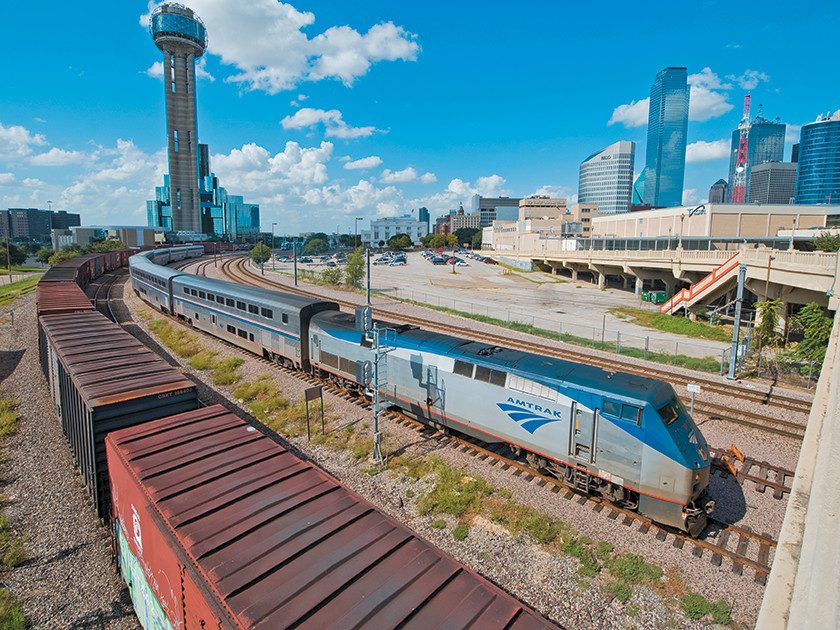As a passenger, not wanting to be treated like cattle, or worse, I'll take a train trip any day, when it's a reasonable alternative. Any time spent to travel to an airport outside of city limits, waiting through security theater, weather delays, and for the appointed departure, still counts toward the journey. And your bags, which travel free, will never be sent to Timbuktu, while you're on your way to Anchorage, because they'll never be more than a short walk away from you.
That's not necessarily the case with Amtrak. They have checked in baggage, and they generally just route the baggage whatever way is the most convenient for Amtrak, where it should be waiting at the destination. And it's decidedly old school where there's no barcode - just a tag attached with a destination. The major destinations might have preprinted tags, but station agents might also write down the destination code. The tags have a place to write down the preferred route, but I hear they often just figure out what route will get it there fastest. It's also possible to check in baggage up to 24 hours before scheduled departure, so often they'll just put it on a train.


